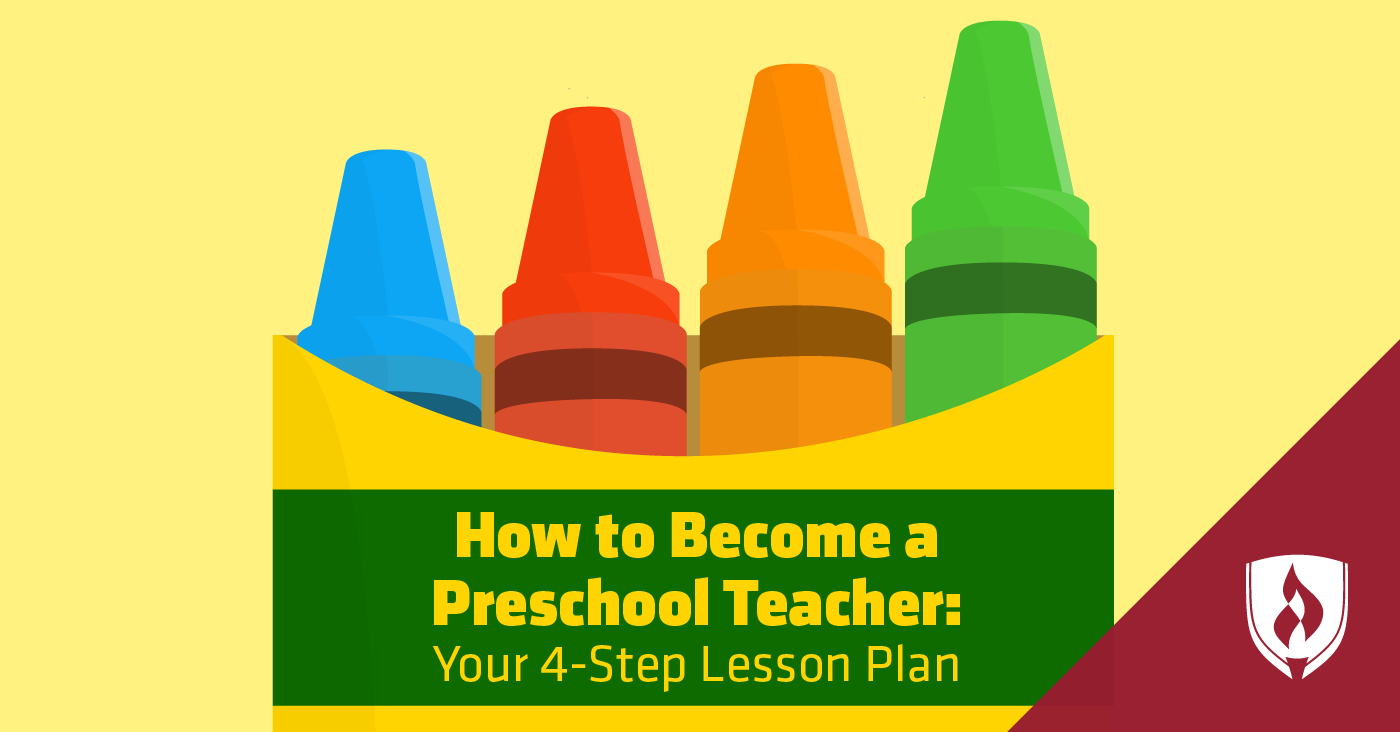
If you’ve ever spent some time with a preschooler, you’ll know just how easy it is for those little ones to make you laugh, fall in love and become instantly exasperated—sometimes all at once. Whether it’s the bizarre and adorable things they say, their shy confidence or their joyful recklessness, the preschool age is truly a special time to witness as an adult.
So how cool would it be to work with those kiddos every day for a living? Professionals in early childhood education (ECE) get to do just that.
There’s a variety of ECE career opportunities for professionals with the right training and a passion for working with kids. Preschool teachers can expect a stable career outlook, according to the Bureau of Labor Statistics (BLS). Employment of preschool teachers is expected to grow at a steady rate of 10 percent through 2026.1 The BLS attributes this to an increasing 3-to-5-year-old population as well as a rising awareness of how powerful preschool can be in building a solid foundation for children.
If you are wondering how to become a preschool teacher and how to make that important work part of your daily life—read on! We gathered the details on this fulfilling career to bring you a 4-step lesson plan for your future.
Step 1: Enroll in an early childhood education program
The BLS reports that preschool teachers usually need at least an Associate’s degree.1 The federally organized Head Start programs (which account for a sizable chunk of preschools throughout the country) require half of their teachers to hold at least an Associate’s degree and the other half at least a Bachelor’s degree in early education or a related field.1
Some employers might require preschool teachers to have some work experience in a childcare setting. In this case, new preschool teachers might break into the field as childcare workers or teacher assistants, according to the BLS.
But the primary requirement for public schools is a license. In every state, preschool teachers must be licensed to teach early childhood education, according to the BLS. Most often, a state’s licensing requirements involve a Bachelor’s degree and passing an exam to demonstrate competency.2
A great degree program in Early Childhood Education will teach students about children’s development, strategies in educating young children and family support.
Step 2: Become certified
Certification and licensing requirements for preschool teachers vary by state and school, though the BLS highlights two common certifications: the Childcare Development Associate (CDA) from the Council for Professional Recognition or the Child Care Professional (CCP) designation from the National Early Childhood Program Accreditation.
The CDA credential is required in several states, according to the BLS. Earning it involves verification of coursework, experience in the field, a written exam and observation of the candidate working with children.
Even if your state does not require the CDA for preschool teachers, employers are likely to appreciate it in their applicants. Learn more about the benefits professionals can receive from the CDA credential at: Is Earning a Child Development Associate Credential Worth It?
Step 3: Apply for positions
You should realize that although preschool teacher jobs are available, they won’t just fall into your lap the morning after graduation. Be proactive about finding opportunities by networking, volunteering or joining professional ECE associations so you can get in the loop on jobs, events and networking opportunities in your area.
And of course, don’t take your college support team for granted—career services advisors are there to make the job hunt easier for you. They can offer ECE resume help, advice, industry insight and connections.
As you start looking around for openings, you might be looking for a certain kind of preschool. During your ECE program, you could find yourself gravitating to certain educational philosophies or environments. Now when you are job hunting, you have the opportunity to do some research and apply to employers who share your values. There are so many different types of schools to choose from—and many have preschool counterparts!
Check out our Ultimate Guide to 13 Different Types of Schools Across America to get a better idea of your options.
Step 4: Continue to add skills
The daily duties of a preschool teacher typically involve teaching children colors, shapes, numbers and letters, targeting specific areas of development in activities, creating routines for students to follow, encouraging expression and empathy, and watching for signs of emotional or developmental struggles, according to the BLS.1
But to be a teacher is also to be a learner, and when you are the one making the activity plans, you might find yourself embedded in research. Your experience in the job can definitely open up new areas of learning. On top of this, trends in early childhood education are worth keeping tabs on since important research in child development can make a big impact on how teachers do their jobs.
As you develop in your career, you might also become interested in pursuing additional formal education. If you begin with an Associate’s degree, for example, you might decide to return to school for a Bachelor’s. Or you might choose to specialize your work toward specific student populations, like English Language Learners (ELLs) or students with special needs. Pursuing education in these areas can help you find the right job for what you love most.
Is the classroom calling you?
Does learning more about how to become a preschool teacher affirm your desire to pursue this profession? Now that you’ve done your homework, it’s time to take the next step toward acquiring the knowledge and hands-on experience needed to succeed in the classroom.
A college education can be what sets you apart from others seeking a preschool teacher position. Rasmussen College’s flexible, competency-based learning options can make earning your degree simpler than you might think—check out the Early Childhood Education degree page to learn more.
Related Articles:
- What Do Preschoolers Learn? What to Expect in Early Education
- 35 Enlightening Light Table Activities for Kids
- What Is Reactive Attachment Disorder? A Practical Guide for Educators
- The 15 Best Fictional Teachers of All Time
- 11 Engaging STEM Activities for Kids that Will Foster Curiosity
- 15 Fantastic Winter Activities for Toddlers
- Home-Based vs. Center-Based Child Care: Which Work Environment Fits You?
1Bureau of Labor Statistics, U.S. Department of Labor, Occupational Outlook Handbook, [information accessed January 2, 2019] www.bls.gov/ooh/. Information represents national, averaged data for the occupations listed and include workers at all levels of education and experience. Employment conditions in your area may vary.
2Any Bachelor's degree that would qualify a student for licensure would need to be approved by the applicable State Department of Education.
EDITOR’S NOTE: This article was originally published in February 2014. It has since been updated.




